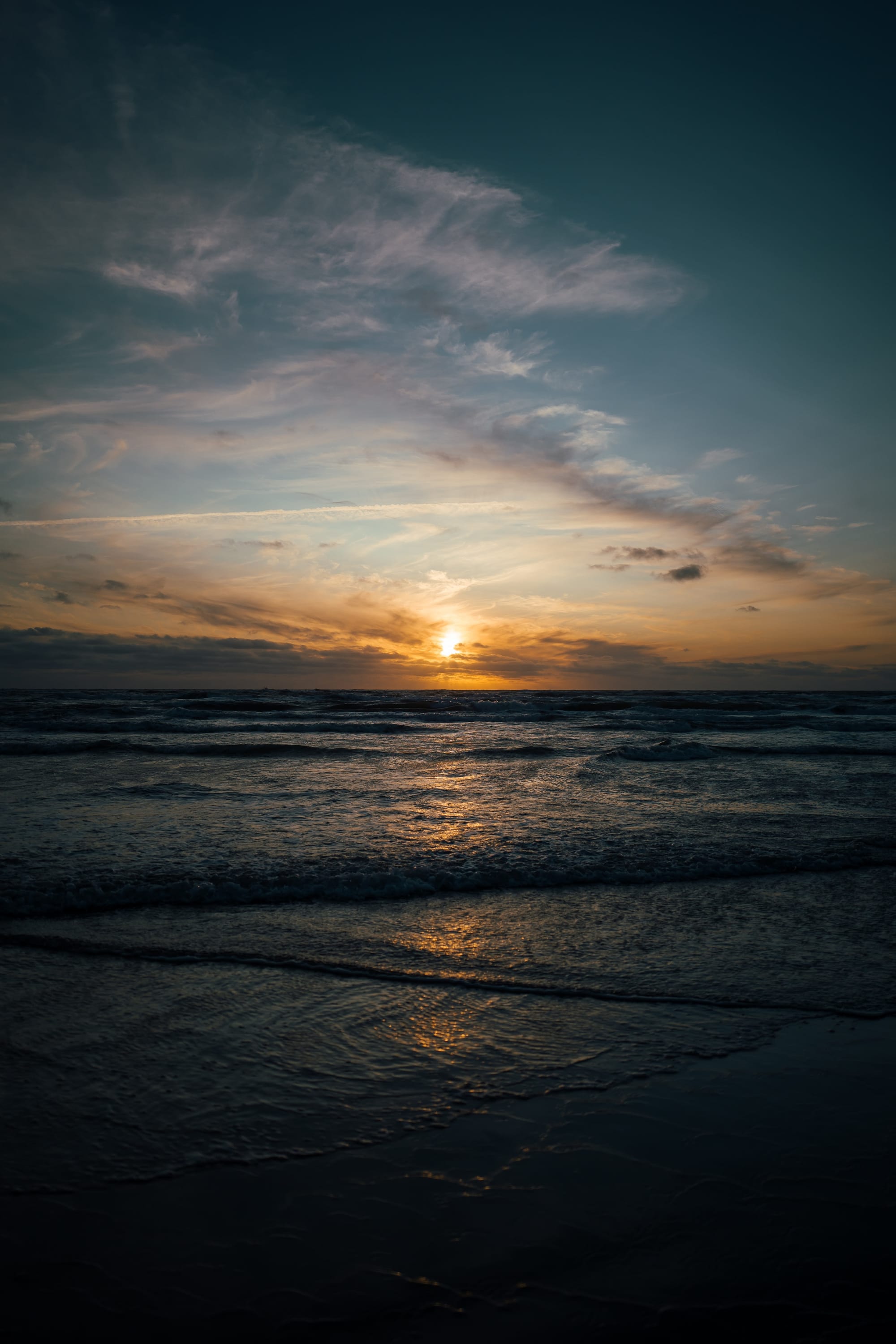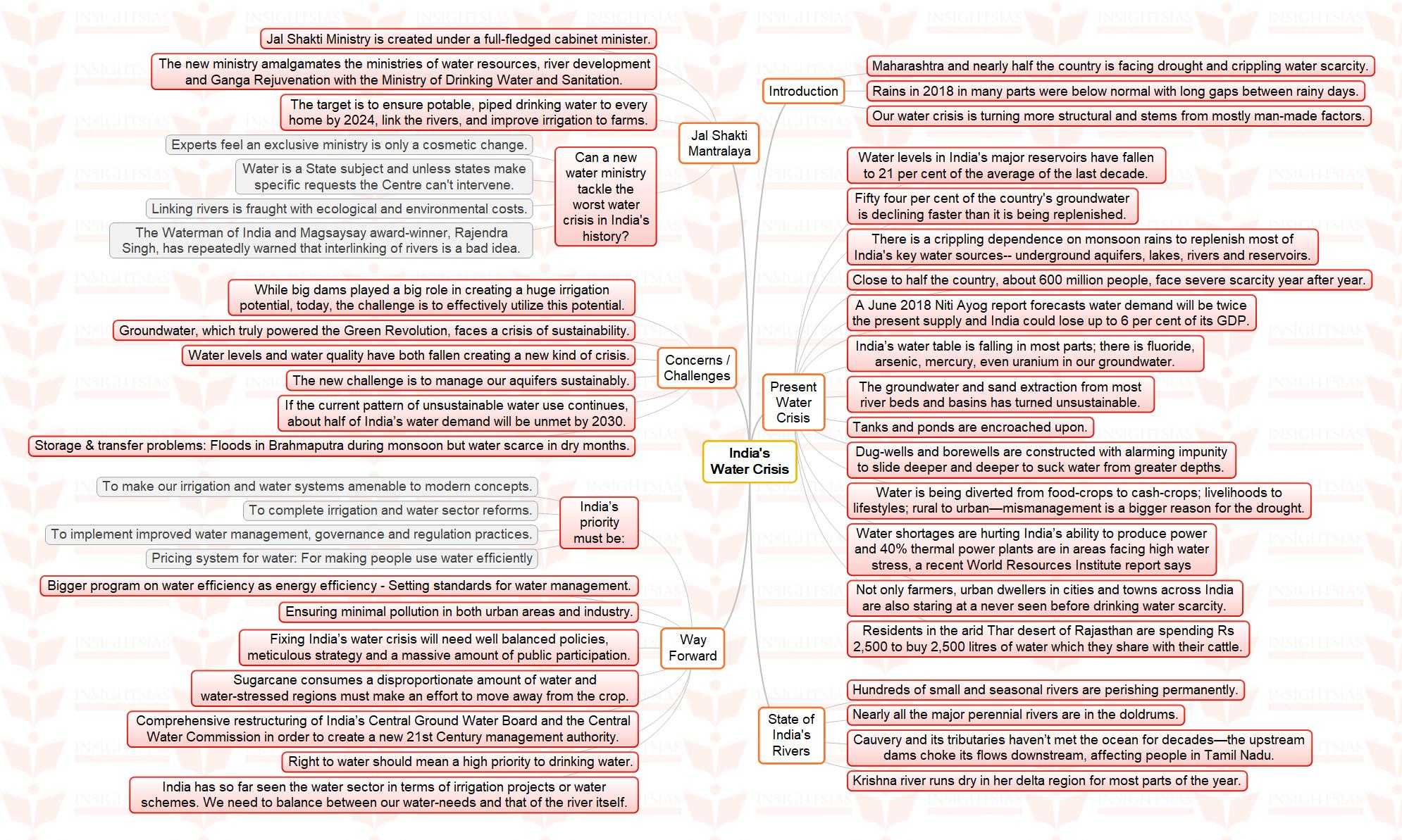Water Crisis in India

"when the well is dry , we know the worth of water"- Benjamin Franklin
Introduction
Water is essential part of Life and this world. It is Fact that Earth consist of 70% water Body but only 2.5 % of it is fresh. The rest is saline and ocean-based.
Even then just 1% of our freshwater is easily accessible with much of it is trapped in glaciers and snowfields.
There are more than 326 million trillion gallons of water on Earth.
In many Countries People wastes milliions of gallens Drinking water everyday due to this many people living in other part of the country didn’t get enough Water to drink. Not only Human but Animals are dying due to lack of Water for Drink especially in Summer.
With a diverse population that is three times the size of the United States but one-third the physical size, India has the second largest population in the world.
Although India has made improvements over the past decades to both the availability and quality of municipal drinking water systems, its large population has stressed planned water resources and rural areas are left out. In addition, rapid growth in India's urban areas has stretched government solutions, which have been compromised by over-privatization.
Regardless of improvements to drinking water, many other water sources are contaminated with both bio and chemical pollutants, and over 21% of the country's disease are water related. Furthermore, only 33% of the country has access to traditional sanitation.
Water Scarcity in the Indian Context-
Water scarcity is the lack of fresh water resources to meet the demands of water use in a region. Availability of water per capita has been reducing progressively in India.
Per capita availability of water in India
1951 - 5177 cubic meters
2001 - 1816 cubic meters
2011 - 1545 cubic meters
2030 - 1300 cubic meters (estimate)
The NITI Aayog for the first time released a Report on the current water availability
across different states in the country titled Composite Water Management Index (CWMI).
In this report, the NITI Aayog has highlighted the fact that 600 million people, or nearly 50% of the current population, face high-to-extreme water stress.
Other important points are:
1. 75% of households do not have drinking water on premise
2. 70% of our water is contaminated
3. India is currently ranked 120th among 122 countries in the water quality index.
Water Scarcity Measurement-
If a country like India has only about 1700 cu. meters water per person per year, it will
experience only occasional or local water distress. If the availability falls below this
threshold value, the country will begin to experience periodic or regular water stress.
If the water availability falls below 1000 cu. meters, the country will suffer from chronic water scarcity. Lack of water will then begin to adversely affect human health and wellbeing as well as economic development.
If the annual per capita supply falls below 500 cu. meters, the country will reach the stage of absolute scarcity.
Reasons for Increasing Water Scarcity-
There are different reasons for the increase in water scarcity. The main causes are:
1. Increasing demand:- Population growth, industrialization, rapid urbanisation,
increasing needs of irrigation, increase in domestic use have pushed up demand
for water. As urbanization increases in India at a rapid pace, water demand will rise
rapidly since city dwellers consume more water than rural citizens.
2. Overexploitation of groundwater and surface water:- Nearly 50% of the World
population depends on groundwater for its drinking needs. In developing countries
like India, groundwater fulfills nearly 80% of irrigation requirement. This has
resulted in fast depletion of groundwater sources. Free power and inefficient use
of water by farmers has added to the problem of groundwater depletion.
Groundwater increasingly is pumped from lower and lower levels, and much faster
than rainfall is able to replenish it.
3. Water Pollution:- Release of industrial and domestic waste, including urban
sewage, into rivers, lakes and estuaries has resulted in pollution of fresh water
sources at an alarming rate in India. Eutrophication of surface water and coastal
zones is expected to increase everywhere.
4. Uneven distribution of water and Rainfall pattern:- Some regions have excess
amounts of water for their requirement while others face perennial droughts for
most of the year. For instance, Drought is a recurrent phenomenon in Andhra
Pradesh where no district is entirely free of droughts. Rajasthan is one of the most
drought prone areas of India.
How much water do we need?
The absolute minimum water requirement for domestic use is 50 litres per person per day, though 100-200 litres is often recommended. Taking into the accounts the needs of agriculture, industry and energy sectors, the recommended minimum annual per capita requirement is about 1700 cubic meters.
Water Resources in India
| Average annual precipitation | 4000 BCM (Billion Cubic Meters) |
| Avg. monsoon precipitation (Jun-Sept) | 3000 BCM |
| Natural Runoff | 1986.5 BCM |
| Estimated utilizable surface water resources | 690 BCM |
| Total utilizable ground water resources | 433 BCM |
| Total annual utilizable water resources | 1123 BCM |
| Per capita water availability | 1720.29 cubic meters |
Water Requirement and Projected Demand
| Irrigation | 557 | 611 | 807 |
| Drinking | 43 | 62 | 111 |
| Industry | 37 | 67 | 81 |
| Energy | 19 | 33 | 70 |
| Others | 54 | 70 | 111 |
| Total | 710 | 843 | 1180 |
As can be seen from the above two tables demand for fresh water will soon out strip availability of water in India. Presently, the annual availability of water is 1123 Billion Cu. Meters (BCM) in India. However, by 2050 the annual demand for water will be 1180 BCM which will be in excess of the water availability.
These figures are based on the study commissioned by the National Commission on Integrated Water Resources Development which are, at best, conservative estimates of demand.
If the figures of Standing Sub-Committee of Ministry of Water Resources are looked at then the projected water demand in 2025 will be 1093 BCM and in 2050 it will reach 1447 BCM.
Impact of Water Scarcity-
1. Not enough water for irrigation:- In India, nearly 70% of the population is still
dependent on agriculture for its livelihood. Since the adoption of Green Revolution
in the 1960's, about 50% of the food production comes from irrigated land.
However inefficient cultivation practices have resulted in flooding of fertile land
which in turn has caused salinization, reservoir siltation etc. This is causing ground
water reserves of major agricultural states to be depleted at an alarming rate.
2. Recurrent droughts:- In 2015-16, 266 districts in 11 states were declared drought
affected. As mean annual rainfall decreases across the country owing to global
warming and climate change and on the other hand ground water reserves are
depleting at an alarming rate due to over exploitation recurrent droughts are being
witnessed in various parts of the country. Maharashtra has witnessed two large
farmer and tribal rallies recently on the issue of droughts and compensation for
crop failure.
3. Conflicts over water: Globally, more than 200 water bodies are shared by two or
more countries. Conflicts are rife over the water available in many rivers and river
basins. In India, there are conflicts between Karanataka and Tamil Nadu over
sharing of Cauvery waters, between Gujarat and Madhya over sharing of Narmada
waters, between Andhra Pradesh and Telangana over sharing of Krishna waters
and so on.
Urbanisation and Water Scarcity-
Presently around 285 million or 33% of India's total population resides in urban areas. by 2050 this figure will reach 50%. Rapid urbanisation is adding to the water scarcity crisis in the country.Water required for cities is largely drawn from neighbouring villages and far-off rivers and lakes. Due to buildings, tar and cement roads, even if a city like Mumbai gets good rains the rain water is not retained in the area since the water is not allowed to percolate underground.Large cities also release large quantities of urban sewage and pollute the fresh water sources and ocean waters. Only about 20% of the urban waste water is currently treated globally. In India, the figure is even lower.
Present situation in India-
Maharashtra is facing a water emergency of unprecedented proportions. Following years of drought, the rivers’ currents have ebbed, water in dams and reservoirs has depleted and over-exploitation of groundwater has raised concerns over the long-term availability of water. Meanwhile media reports claim IT companies in Chennai are asking employees to work from home. The reason being they don’t have water to sustain operations. It has not rained for almost 200 days in the city and Chennai may not get sufficient rain to tide over the water crisis for the next three months.
In North India, residents in the arid Thar Desert of Rajasthan are dishing out Rs 2,500 to buy 2,500 litres of water, which they share with their cattle. With the threat of desertification staring Punjab in the face and the state struggling to break away from the ‘wheat-paddy’ cycle, farmers in the state are quickly adopting a five-decade-old scheme to use ‘Underground Pipeline System’ for irrigation. The union government on its part has created a Jal Shakti Ministry under a full-fledged cabinet minister to try and address the water emergency, but a lot more needs to be done.
Analysis:
India receives 4000 bcm rainfall every year. Out of this, 1869 bcm is left after evaporation and the actual availability is 1137 bcm. There is a lot of temporal and spatial variation in the availability of this water. There are water surplus states and water scarce states like Maharashtra (Vidarbha, Beed), Karnataka, Tamil Nadu, Rajasthan, parts of Gujarat, Punjab and Haryana.
Issues with long term projects:
1.Interlinking of rivers is a long-term project. It is almost 20 years now and the groundwork has not started for Ken-Betwa project. There is a lot of political opposition and there are ecological concerns as well. Half of the Panna tiger Reserve will be submerged.
2.There are floods in Brahmaputra river at the time of monsoon but water is required in Assam during dry months.
3.There is the problem of storage and transfer of water as well.
Major issues-
- Delay in monsoon and change in pattern.
- Management of both supply side and demand side of water.
- India’s availability of water at present is 1700 cubic ft per person, which was 5000 cubic ft per person once upon a time.
- Unprecedented heat waves, which can become more persistent with climate change.
- Less pre monsoon rain.
- Reservoir levels are going down.
- 91 reservoirs in India are at 19% of their life storage.
How to manage water available?
1.Centre, states, people and all stakeholders need to take action in this regard.
2.Vigorous programmes on water efficiency are required like energy efficiency.
3.There is an urgent need for coordination among users for aquifers. There should be laws and contracts for sharing of aquifers.
4.Groundwater mapping has started recently in India.
5.There should be a River Basin Authority for sharing information among states as most of the rivers in India pass through different states focusing on conservation.
6.At the village level, there can be decentralized management of water at community level.
7.Charging money for efficient use of water (as in case of electricity). For example- Water ATMS at Marathwada provide water @25 paisa per litre a day.
8.Changing the cropping pattern, crop diversification and encouraging water use efficiency in agriculture by moving towards food crops from cash crops.
9.Coordinated efforts among states for management of ground water at a localized level.
10.Encouraging rain water harvesting, check dams
Which steps have been taken in this regard?
1. Jal Shakti Ministry has been incorporated to address the issue. It clubs Water Resources, River Development and Ganga Rejuvenation and has promised that it would ensure potable, piped drinking water to every home by 2024.
2.Serious crisis has been partly avoided as rabi crops have been harvested and kharif crops are yet to be sown.
3.States are also taking the lead in this regard with various schemes like:
Mukhya Mantri Jal Swavlamban Abhiyan - Rajsthan
Jalyukt Shivar Abhiyan - Maharashtra
4.Hiware Bazar, a village in the Ahmednagar District of Maharashtra, India is noted for its irrigation system and water conservation program, with which it has fought the drought and drinking water problems.
5.Prime Minister has written to all Sarpanch in the country to undertake water conservation programme within their village.
6. Discouraging wasteful activities: Indian cities will need to learn lessons from Cape Town in South Africa which when faced with the prospect of running out of water in 2018 announced "Day Zero"- when water taps in the city were turned off and people had to use communal water taps to conserve water. Limits on water use per person were set. State governments in India will need to take bold decisions and create awareness for the minimal use of water since water is a state subject in India.
Can Interlinking of Rivers Tackle the Water Crisis?
Interlinking of rivers is a topic that has been discussed and debated for many years as a possible permanent solution to the water woes in the country. The three major advantages cited in favour of the scheme are (1) droughts will never occur (2) there will be no more floods in the major rivers and (3) an additional 30,000 MW of hydropower will be generated.
However, the budget required for this project is estimated at 25% of our GDP! The water which is made available through such a costly project will also be priced quite high to recover the costs. Will the consumers, mainly the farmers, be willing to pay a high price for water?
Also, it is not even clear that the rivers like the Ganga, the Brahmaputra, the Mahanadi, and the Godavari are water-surplus since the sources of such rivers are drying up and the rivers themselves are choked with silt.
There will be large scale habitat loss, environmental destruction and population displacement in building over 200 reservoirs and a network of crisscrossing canals. Therefore interlinking of rivers is not a practical solution to the water scarcity crisis that India is facing in the short and long term.
Conclusion-
1. India is not a water deficit country, but due to severe neglect and lack of
monitoring of water resources development projects, several regions in the
country experience water stress from time to time.
2. In spite of good annual rainfall, India faces a critical water shortage due to
mismanagement, pollution, and ground water depletion.
3. A major challenge for India is its rising water demand coupled with economic
development.
4. India’s increasing population and economic growth has put tremendous pressure
on India’s water resources. Water demand is steadily increasing and will continue
to do so.
5. Balancing water demand with available supply will be crucial for future economic
growth and development.
Mind map - Water Crisis

Related Videos-
India's Water Crisis - Every Drop Counts
India's Looming Water Crisis.pdf
Related Current Affairs

